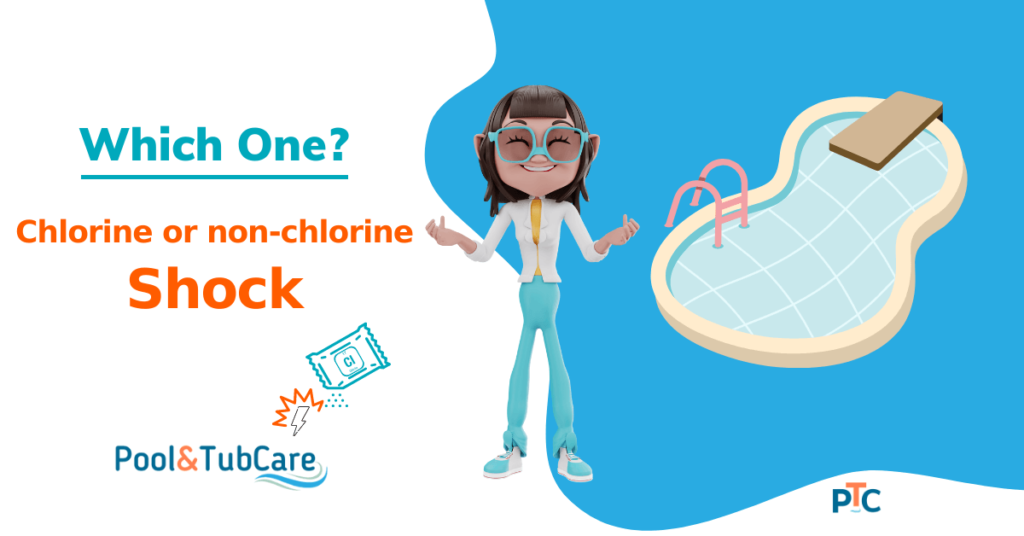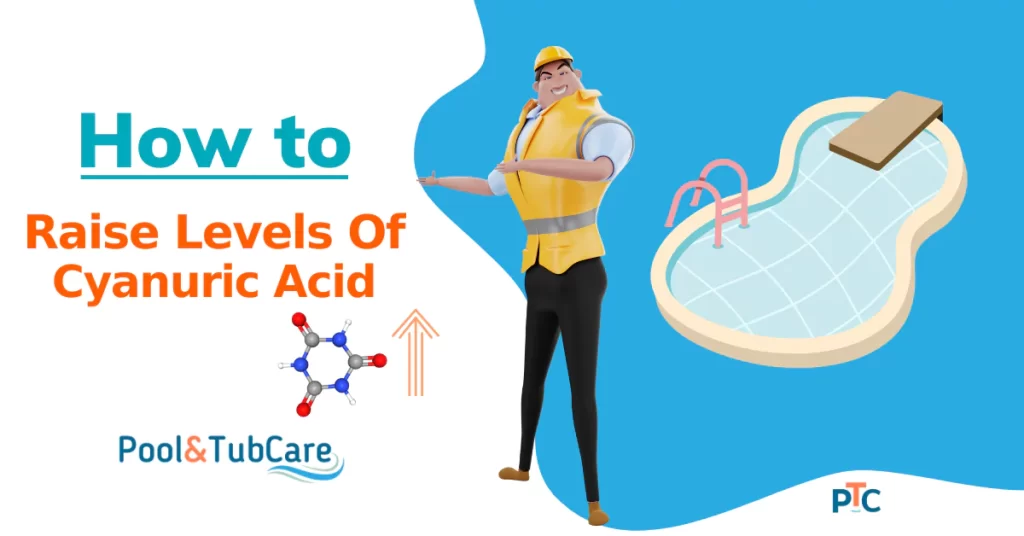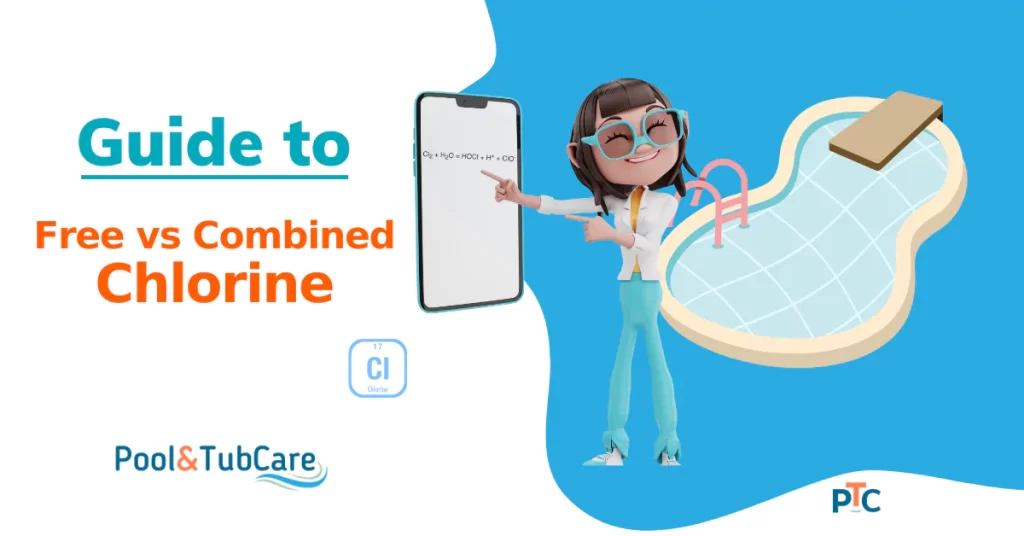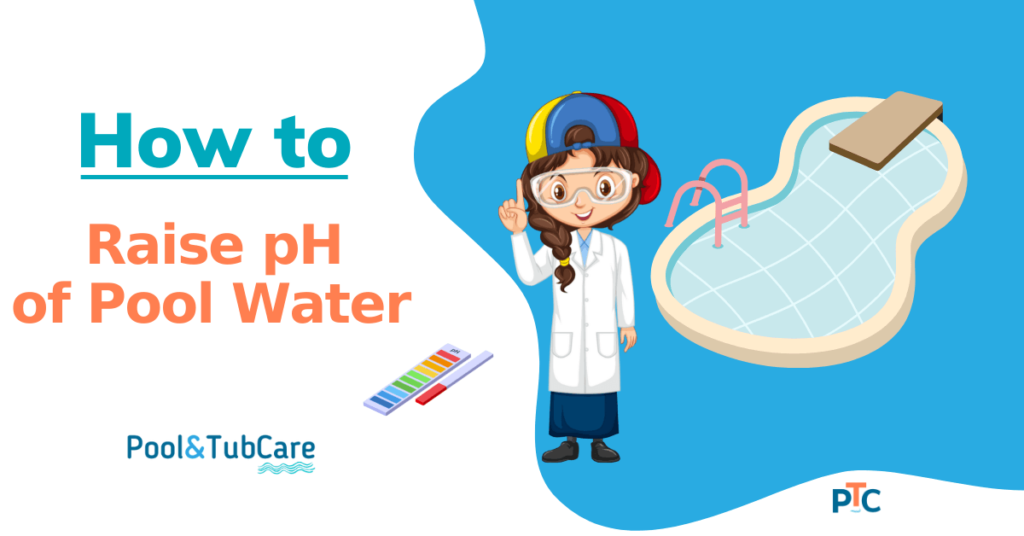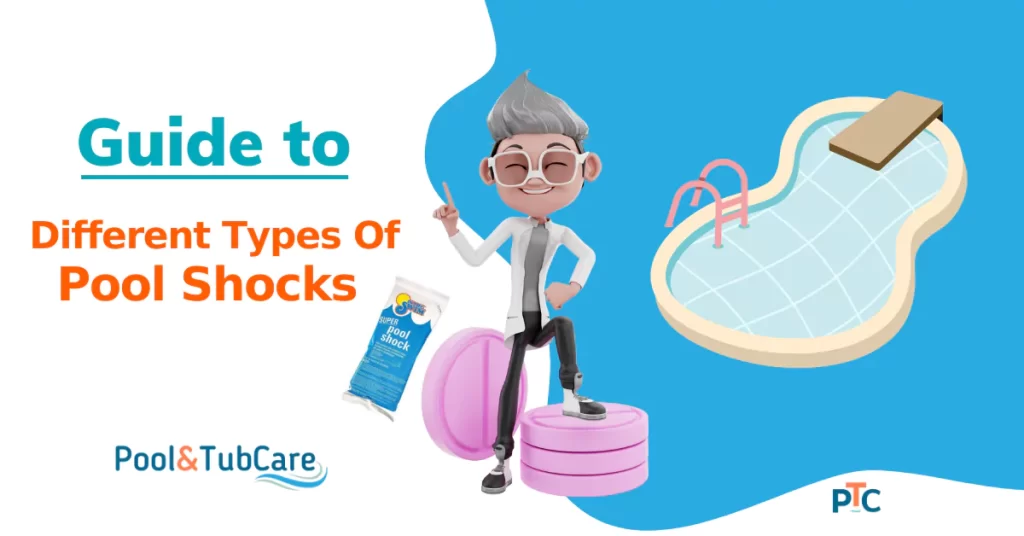Shocking your pool is required to maintain your pool in good health. To keep chloramine levels low and pollutants at bay, you have to shock your pool on a regular basis.
Pool shock comes in two varieties: Chlorine and non-chlorine shock. Both have advantages and disadvantages, so which is ideal for your pool? It depends on your needs. If you need a sanitizer that works quickly and effectively to eradicate algae and bacteria, chlorine shock is the way to go. Non-chlorine shock, however, is the preferable alternative if you’re looking for a softer solution for weekly shocking and are concerned about destroying your pool equipment.
Let’s look at when you should use chlorine shock and when you should use non-chlorine shock.
What Does Shocking a Pool Mean
To shock a pool, a high sanitizer concentration is added to the water to kill contaminants.
The process of shocking your pool helps in the breakdown of organic waste such as sweat, oils, and urine, which can cause cloudy water and strong chlorine odors.
Shocking also helps in the removal of chloramines, which are formed when Chlorine binds to nitrogen-containing pollutants. Chloramines can irritate the skin and eyes and give the pool an unpleasant odor.
A higher concentration of chloramines also leads to fumes which may be dangerous in an indoor pool if there is no proper ventilation.
Shocks are classified into two types: Chlorine and non-chlorine!
Non-chlorine shocks used to be quite expensive, but they are now just around 10% more expensive. Non-chlorine shock has grown in popularity because of the various advantages discussed ahead.
What is Non-Chlorine Shock
A non-chlorine shock is a chlorine-free pool sanitizer used to kill off contaminants and break down chloramines.
This type of shock is known as Oxy shock because it contains oxygen and potassium salts. They also include MPS (potassium peroxymonopersulfate).
It works by oxidation, which breaks down chloramines, germs, and organic material.
Pool surfaces and equipment are not damaged by non-chlorine shocks and are safe for swimmers to use within a few minutes. They are also less prone to irritate the skin and eyes.
They are easy to use weekly and can prevent organic growth while keeping your pool clean. You don’t have to dissolve it like a cal-hypo shock.
Benefits of Non-chlorine Shock
Using a non-chlorine shock instead of a chlorine shock has several advantages, including:
1. They are Kind to Pool Equipment and Surfaces
Non-chlorine shock is a great method if you’re looking for a way of shocking your pool that is gentle on surfaces and equipment.
Unlike traditional chlorine shock, which can be harsh on pool surfaces and equipment, non-chlorine shock is much gentler.
Furthermore, non-chlorine shock is more ecologically friendly than standard chlorine shock, making it a great alternative for people seeking a more environmentally friendly solution.
This shock will also not bleach your swimwear.
2. They are Safe to Use for Swimmers Within a Few Minutes
Most people are aware of the chlorine odor frequently associated with swimming pools.
While Chlorine is a great pool cleaner, it may not be very pleasant to the skin and eyes.
A non-chlorine shock is safe for taking care of organic waste and other pollutants in pool water.
Furthermore, it is safe to use around swimmers after only a few (15-20) minutes of application.
3. Doesn’t Raise Chlorine Levels
Non-chlorine shock, unlike traditional chlorine shock, does not raise chlorine levels significantly.
Instead, it operates by releasing oxygen into the water, which helps in the breakdown of organic matter and the maintenance of pure water.
A non-chlorine shock is a great option to keep your pool sparkling clean or avoid the high chlorine levels associated with typical shock treatments.
After applying non-chlorine shock, there is no odor in the pool.
Furthermore, if you include bromine in your pool care, you won’t have to worry about non-chlorine shock affecting the bromine levels in the water.
4. No Effect on pH
Non-chlorine shock is an excellent alternative for thoroughly cleaning your pool without affecting the pH levels.
Some chlorine shock (cal hypo) has a pH of 12 that can imbalance the pool water chemistry after shock.
Add the recommended amount of shock to your pool as the manufacturer directs, and you’ll have crystal-clear water in no time.
5. Doesn’t Affect Calcium Levels
This type of shock does not imbalance the chemical balance, like calcium levels.
The active component in cal-hypo chlorine shocks is calcium hypochlorite. A scale can form when you use too much calcium in your water.
The filtration system is intended to keep your pool clean, but scale caused by calcium hardness can accumulate on the siding, filters, and other essential components over time.
It is difficult to remove in certain situations, and the harm may be irreversible.
If your pool has higher calcium levels, it’s a better option to use non-chlorine shock.
6. Have No Effect on Cyanuric Acid Concentration
Cyanuric acid is added to pool water to help regulate the levels of chlorine. It’s also known as a “stabilizer” or “conditioner.”
Without it, chlorine would quickly break down in the presence of sunlight. Almost 90% of free chlorine can be lost within one or two hours.
While cyanuric acid is essential to pool maintenance, too much of it can be harmful.
If the concentration becomes too high, it might bond with chlorine, reducing its effectiveness and leading to chlorine lock. As a result, you may need to add more chlorine to maintain your pool at the same level of chlorine.
A few chlorine-based shocks raise cyanuric acid levels; however, non-chlorine shock does not cause this problem since it does not affect the cyanuric acid concentration in pool water.
7. Non-chlorine Shock is Not Affected by Sunlight and Temperature
Chlorine shock should be used in the evening as sunlight breaks Chlorine, and shock is less effective during the day.
Non-chlorine shock can be used at all times, and it is also effective at all temperatures.
You may also return to the water only 15 minutes after shocking it. Many pool owners prefer non-chlorine shock for these reasons.
8. Can be Used in Saltwater Pools
A chlorine generator converts salt into Chlorine in a saltwater pool. This eliminates the need to add more Chlorine to the water manually.
A non-chlorine shock oxidizes pollutants in the water without affecting the quantity of Chlorine present in the water.
Calcium carbonate deposits caused by cal-hypo shocks can cause pool equipment damage, which is not the case in non-chlorine shock.
9. Can be Used Without Pre-dissolving.
You don’t have to pre-dissolve the non-chlorine shock before mixing it with the water.
Follow the instructions on the package, and you’ll be ready to enjoy your pool in no time.
When Non-Chlorine Shock Can’t be Used
Non-chlorine is not always effective, in a few cases, you need to use traditional chlorine shock.
Like if your pool has an algae bloom, non-chlorine shock will not work on it. To get rid of algae, you need to use chlorine chock.
If you are dealing with chlorine lock or chlorine demand, you need to use chlorine shock to raise the chlorine levels in the pool.
You’ll need to use chlorine-based shock if your pool water has a lower pH. Non-chlorine shocks, such as MPS, have an average pH of 2.3.
If you add too much MPS to your pool, it will become chemically imbalanced and require repeated treatments to increase the pH.
When to Use Non-Chlorine Shock
Following are the cases when you can prefer non-chlorine shock over the Chlorine one:
- To avoid organic growth and keep your pool clean, use a non-chlorine shock once a week.
- You may also want to use it more frequently if your pool has a lot of swimmers or if the weather is hot and sunny.
- If you want to use your swimming pool immediately after shock, use non-chlorine shock since you may jump right in after 15 minutes.
- If your pool already has high chlorine (above 5 ppm), a non-chlorine shock is a better alternative since chlorine shock can raise the chlorine levels even further.
- If you find your pool water cloudy, a non-chlorine shock treatment might help clean it up.
How to Use Non-Chlorine Shock
It is easy to use a non-chlorine shock.
Add the recommended amount of shock to your pool as directed by the manufacturer after considering your pool water volume.
Non-chlorine shocks may usually be poured directly into a pool. You can, however, mix your shock before adding it if you want. Always follow the manufacturer’s dosage instructions.
Let the water circulate for 15 to 30 minutes, and the pool is ready for swimming.
Treat any kind of pool chemicals with caution and use all the protective gear like gloves, full-length cloths, and protective eyewear.
Read also: Ideal chlorine levels for your pool!
What is Chlorine based shock
Chlorine is a disinfectant that can kill many kinds of microorganisms and break down organic contamination.
When you add a very high concentration (generally 10x of combined chlorine) of chlorine to clean your pool, it’s called chlorine shock.
When the chlorine levels in the pool have gone too low, a chlorine shock treatment is frequently required. This can occur due to various factors, including heavy rain or increased pool usage.
Chlorine shocks also eliminate algae and other organic growths that generate cloudy pool water.
How Does Chlorine Shock Work
Chlorine-based shock is the most effective and cheap way to clean your pool.
During chlorine shock, you super chlorinate your water to kill any virus, bacteria, or algae.
It also breaks down any organic contaminants like human sweat, oil, and waste.
When chloramine levels are very high, then also you need to add chlorine shock to reach chlorine breakpoint.
Shocking a pool is straightforward; add Chlorine to the water to reach the breakpoint where a high chlorine level may break down chloramines.
The water should then be circulated for many hours to ensure that the Chlorine is evenly distributed.
Chlorine shock, when done appropriately, may help maintain your pool water clean and clear all season.
Related: How to use chlorine tablets!
How to Use Chlorine Shock
Add the recommended amount of shock to your pool as directed by the manufacturer.
Chlorine is a dangerous substance, so it must be handled with care. Always use protective gear such as safety glasses, gloves, and body covering when working with chemicals.
Here is a detailed guide on how to shock your pool correctly.
Types of Chlorine based Shocks
Before adding chlorine shock to the pool water, it must be mixed with water.
There are several types of chlorine-based shocks on the market.
The most common are calcium hypochlorite, sodium dichloroisocyanurate, and lithium hypochlorite acid. Each of these has its own set of advantages and disadvantages.
Calcium hypochlorite: This is the most common type of chlorine-based shock. It has the power to kill germs and algae, and it is, however, the most corrosive and can damage pool surfaces.
Sodium dichloro-S-triazinetrione (Dichlor): This chlorine-based shock is less corrosive than calcium hypochlorite and is Chlorine that has been stabilized. Less prone to be affected by sunlight.
Lithium hypochlorite: It is the most expensive for shocking a pool. Its advantage is that it dissolves immediately, making it excellent for vinyl-lined pools or other surfaces prone to bleaching. Furthermore, it leaves no residue and does not add calcium to your pool water.
So Which Shock to Use (Chlorine or Non-chlorine)
Non-chlorine-based shock is the best option for frequent shocking to avoid an increase in organic waste because it does not change pool chemistry much and is less harsh.
However, when bacteria and algae exist, you must use chlorine-based shock, as the non-chlorine-based shock does not work on algae.
For weekly shocks, use non-chlorine shock and use a combination of both when dealing with the growth of algae or bacteria.
FAQs
Here are a few frequently asked questions.
Is non-chlorine shock as good as chlorine shock?
In terms of destroying bacteria and algae, non-chlorine shock is less effective than chlorine shock. Non-chlorine shock is equally effective for breaking down chloramines and removing typical waste like organic matter, including sweat, oils, and so on.
Does non-chlorine shock raise chlorine levels?
Non-chlorine shock does not raise total chlorine levels as it does not add Chlorine to the water.
Can you add too much non-chlorine shock?
Using too much non-chlorine shock might lead to a decrease in the pH of the water. So, no, you shouldn’t use too much non-chlorine shock.
Will non-chlorine shock clear cloudy water?
Yes, non-chlorine shock can help clean cloudy water caused by pollutants by oxidizing them, resulting in crystal clear water. However, it will not be restored if the murky water is caused by a pH or alkalinity imbalance.
Can you use Chlorine and non-chlorine shock together?
Yes, you can use Chlorine and non-chlorine shock together. It is indeed recommended that you do so when dealing with a high load of contamination as they serve different purposes. Chlorine shock kills bacteria and algae, but non-chlorine shock helps remove organic waste. Do not mix both chemicals together.

